2018 Toyota Tundra Service, Tires & Repairs
Get Started
Complete Auto Care for Your 2018 Toyota Tundra
-
TIRES FOR YOUR 2018 Toyota Tundra View Tire Info GET TIRE PRICING
-
REPAIR FOR YOUR 2018 Toyota Tundra View Repair Info SCHEDULE REPAIR
-
MAINTENANCE FOR YOUR 2018 Toyota Tundra View Maintenance Info SCHEDULE MAINTENANCE
-
OFFERS FOR YOUR 2018 Toyota Tundra Limited Time Tire Offers VIEW ALL COUPONS
2018 Toyota Tundra Tires
Recommended Tires | Tire Information
2018 Toyota Tundra Tires Sizes, Speed Ratings, and Inflation
Not sure about your 2018 Toyota Tundra tire size? Use the following chart to find information on tire size, speed rating, and inflation.
| Trim Level | Speed Rating | Inflation in PSI F/R | Tire Size |
|---|---|---|---|
| 2018 Toyota Tundra 1794 Edition* | T | 30 PSI/33 PSI | P275/65R18 |
| 2018 Toyota Tundra 1794 Edition* | H | 30 PSI/33 PSI | P275/55R20 |
| 2018 Toyota Tundra SR5* | T | 30 PSI/33 PSI | P275/65R18 |
| 2018 Toyota Tundra SR5* | H | 30 PSI/33 PSI | P275/55R20 |
| 2018 Toyota Tundra SR5* | T | 30 PSI/33 PSI | P255/70R18 |
| 2018 Toyota Tundra SR | T | 30 PSI/33 PSI | P255/70R18 |
| 2018 Toyota Tundra Limited* | H | 30 PSI/33 PSI | P275/55R20 |
| 2018 Toyota Tundra Limited* | T | 30 PSI/33 PSI | P275/65R18 |
| 2018 Toyota Tundra Platinum | H | 30 PSI/33 PSI | P275/55R20 |
|
2018 Toyota Tundra 1794 Edition* Speed Rating: T Inflation F/R: 30 PSI/33 PSI |
|
2018 Toyota Tundra 1794 Edition* Speed Rating: H Inflation F/R: 30 PSI/33 PSI |
|
2018 Toyota Tundra SR5* Speed Rating: T Inflation F/R: 30 PSI/33 PSI |
|
2018 Toyota Tundra SR5* Speed Rating: H Inflation F/R: 30 PSI/33 PSI |
|
2018 Toyota Tundra SR5* Speed Rating: T Inflation F/R: 30 PSI/33 PSI |
|
2018 Toyota Tundra SR Speed Rating: T Inflation F/R: 30 PSI/33 PSI |
|
2018 Toyota Tundra Limited* Speed Rating: H Inflation F/R: 30 PSI/33 PSI |
|
2018 Toyota Tundra Limited* Speed Rating: T Inflation F/R: 30 PSI/33 PSI |
|
2018 Toyota Tundra Platinum Speed Rating: H Inflation F/R: 30 PSI/33 PSI |
* Note: these models have different tire sizes depending on vehicle options.
Recommended Tires for Your 2018 Toyota Tundra
What tires are best for a 2018 Toyota Tundra? Check out the following tire brands and types.
 ALENZA AS ULTRA
ALENZA AS ULTRA
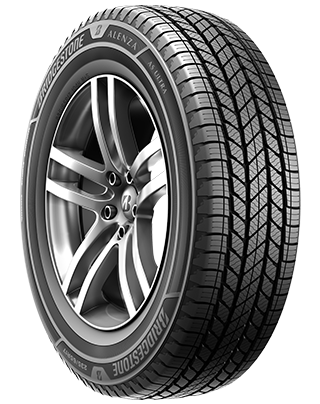
- No warranty
- All-Season
- Light Truck Tires
 Blizzak DM-V2
Blizzak DM-V2
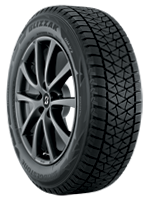
- No warranty
- Winter
- Winter
 DriveGuard Plus
DriveGuard Plus
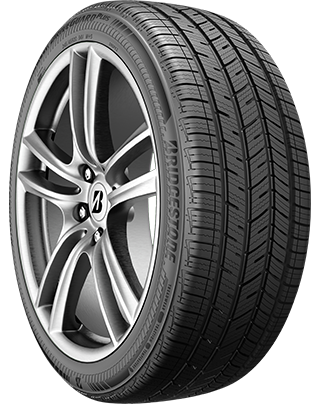
- Platinum Pact Limited Warranty
- All-Season
- Performance
 Dueler H/L Alenza
Dueler H/L Alenza
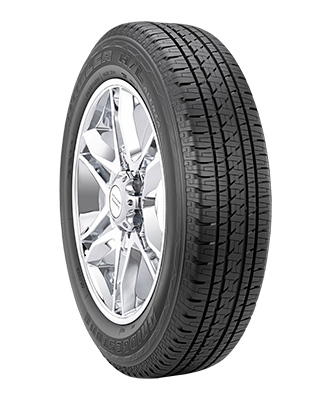
- Platinum Pact Limited Warranty
- All-Season
- Light Truck Tires
 Dueler H/L Alenza Plus
Dueler H/L Alenza Plus
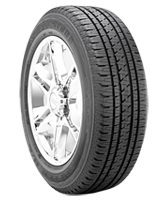
- Platinum Pact Limited Warranty
- All-Season
- Light Truck Tires
 Dueler A/T Revo 3
Dueler A/T Revo 3
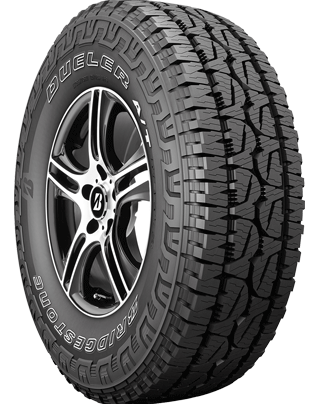
- Platinum Pact Limited Warranty
- All-Season
- Light Truck Tires
 Dueler H/T 684 II
Dueler H/T 684 II
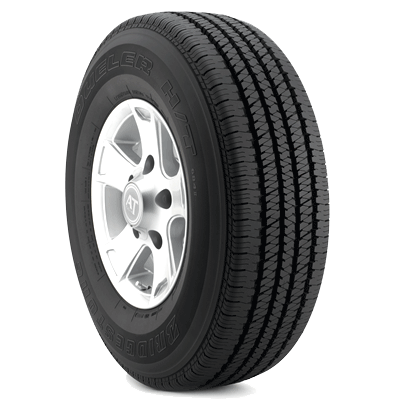
- Platinum Pact Limited Warranty
- All-Season
- Light Truck Tires
 Dueler H/T 685
Dueler H/T 685
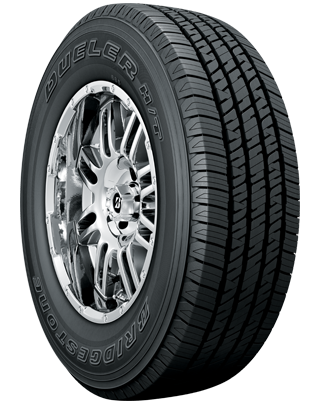
- No warranty
- All-Season
- Light Truck Tires
 WEATHERPEAK
WEATHERPEAK
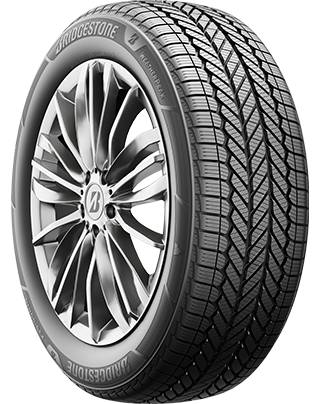
- Platinum Pact Limited Warranty
- All-Season
- Passenger Tires
 Dueler A/T RH-S
Dueler A/T RH-S
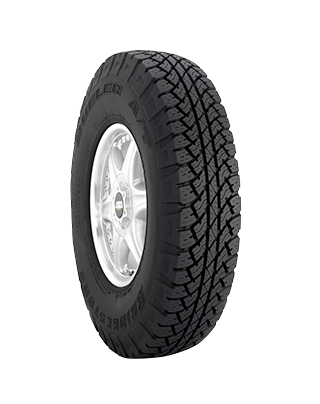
- Platinum Pact Limited Warranty
- All-Season
- Light Truck Tires
 Destination LE3
Destination LE3
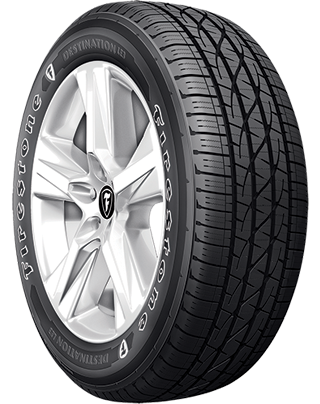
- No warranty
- All-Season
- Light Truck Tires
 Destination A/T2
Destination A/T2
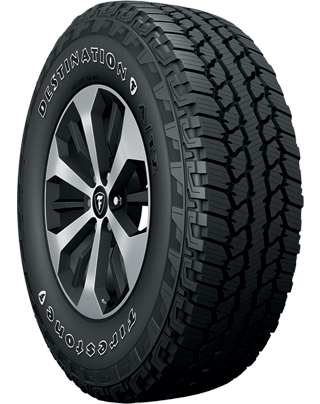
- Gold Pledge Limited Warranty
- All-Season
- Light Truck Tires
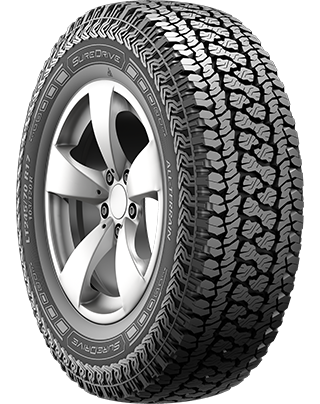
- No warranty
- All-Season
- Light Truck Tires
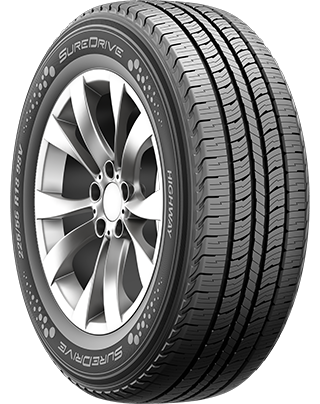
- No warranty
- All-Season
- Light Truck Tires
 PROXES ST III
PROXES ST III
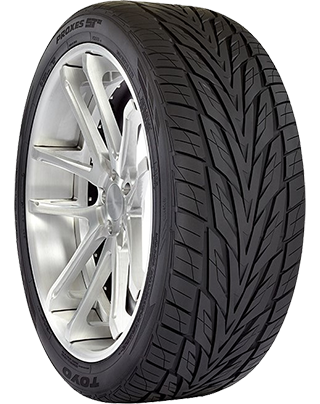
- No warranty
- All-Season
- Light Truck Tires
 OPEN COUNTRY R/T
OPEN COUNTRY R/T
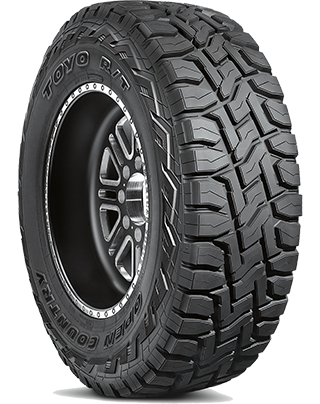
- No warranty
- All-Season
- Light Truck Tires
2018 Toyota Tundra Tire Information
Beyond the correct tire size, there are a couple of other factors to consider when buying Toyota Tundra tires like where and how you drive, and what tire brand you trust most. When thinking about your driving conditions, consider where you live (mountains vs. city vs. countryside) and the kind of weather can catch you off-guard. (Watch out Tornado Alley!) Many drivers who live in states that experience all four seasons choose to purchase two sets of tires: one for winter and one for summer. Other drivers prefer the convenience of all-season tires. They make one trip to the tire shop and they're pretty much ready for rain, light snow, or sun!
Next, consider your driving style. If you're a diehard off-roader, you have very different tire needs than a highway commuter who doesn't leave the paved path. Talk to a tire technician at Firestone Complete Auto Care for help choosing the best tire for you, or start shopping for Toyota Tundra tires online.
2018 Toyota Tundra Tire Installation & Rotation
We sell tires, but we also service them and care for all the around-the-wheel components. We're your one-stop shop for tire installation, rotation, and ongoing maintenance! We make it easy to buy new 2018 Toyota Tundra tires online and book an installation appointment at the same time.
Questions About 2018 Toyota Tundra Tires
-
Why does Toyota tire inflation matter? A small decrease in tire pressure can have a big impact on your driving. Maintaining proper tire pressure can help improve braking time, increase fuel economy, and boost tire lifespan.
-
What do the tire sidewall numbers mean for my Toyota Tundra? The numbers on your tire sidewall give you information about tire speed rating, traction, treadwear, tire size, and load carrying capacity. Chat with a tire technician to learn how to read the numbers on your Toyota tires!
-
How do I check the tread depth on my Toyota tires? Stay on top of your tire tread depth to help avoid a dangerous drive. You can check tread depth with a penny. Hold the penny so that Abraham Lincoln is facing you, then place your penny into a tread groove upside down. If you can see the top of Abe’s head, your tread is shallow and it might be time for new Toyota Tundra tires. Grab a penny. Hold the so that Abe Lincon's head is facing you and his hair is pointing toward the ground. Then, place the penny into a tread groove. If you can see the top of Abe’s head, your tread is shallow and it might be time for new Toyota Tundra tires.
2018 Toyota Tundra Repair
Want more details? Choose a service below to read more about Toyota Tundra repairs at Firestone Complete Auto Care.
Get Repairs for Your 2018 Toyota Tundra
Car repairs: for many drivers, that phrase is a dreadful one. But we work to provide you with a different experience at Firestone Complete Auto Care. Bring your 2018 Toyota Tundra in for repair services and our skilled repair technicians will get your Tundra back on the road. We'll work to evaluate the scope of repairs needed and explain your options. We’ll never recommend a repair we don’t think is necessary for your safety or the performance of your Toyota.
How Much Does Toyota Tundra Repair Cost?
Several factors can affect the cost to repair your 2018 Toyota Tundra, including the type of repair, costs of replacement parts or repair supplies, the labor involved, and where you live. But no matter your location, you may be able to save money with one of our many auto repair coupons or offers.
A few different aspects can influence repair costs for your 2018 Toyota Tundra, like
2018 Toyota Tundra Auto Repair Q&A
-
Do I need to follow Toyota's maintenance schedule? Don’t neglect scheduled maintenance. Sure, you could skip out on a few recommended maintenance services, but you may pay the price later. Bring your vehicle to Firestone Complete Auto Care at recommended service intervals to address minor issues before they get out of hand and keep your car running newer, longer.
-
What's wrong if something feels 'off' in my Toyota? No, we’re not talking about finding the best jams on the radio! You know your car best, and you’re the first person who will notice if something doesn’t feel right (like new smells, sights, or sounds coming from your car). If you sense that something is 'off,' stop in for a Courtesy Check to have these symptoms checked out ASAP. Early action could help you prevent Toyota Tundra repairs.
-
Are the repairs you recommend for my Toyota actually needed? Trust is more than just a saying on the wall. It’s a window underneath it. That’s why we won’t recommend services or repairs for your 2018 Toyota Tundra unless we think they’re vital to your safety on the road.
Get Your 2018 Toyota Tundra Brakes Fixed
Your Toyota Tundra engine may be strong and reliable. But if you can't stop it, then it's scrap metal. If you’re experiencing squeaky brakes or a loss of braking power, don’t wait! Unresponsive brakes make it tough to give the road your best. Plus, ignoring your brake problems can result in more damage and higher brake repair bills. Get your 2018 Toyota Tundra brakes fixed at Firestone Complete Auto Care. We offer many affordable brake repairs like brake pad/shoe removal and replacement, brake rotor/drum refinishing, brake fluid exchange/bleeding, and brake caliper and wheel cylinder service.
Questions About Your Toyota Tundra Brakes
-
What can cause my Tundra to shake when I apply the brakes? If your Tundra shakes when you brake, you could be dealing with warped rotors, faulty brake calipers, worn brake pads or rotors, or loose or worn suspension parts. Schedule a free brake inspection at Firestone Complete Auto Care for help diagnosing your brake issue.
-
What is the average lifespan of Tundra brake pads? You can usually get around 30,000 to 40,000 miles out of your brake pads, but how and where you drive your Tundra can affect this. Hauling large loads or riding your brakes can shorten their lifespan, while smoothly braking and mostly sticking to highways can help your brake pads last longer.
-
Can brake fluid leak when my Tundra is off? Your Tundra brake system is a closed hydraulic system, so a brake fluid leak likely means you have an issue in your brake system. Over time, brake components can wear out or get damaged, causing a brake fluid leak.
Repairing Your Toyota Tundra Drivetrain
Drivetrains for front, rear, and all-wheel-drive and 4WD vehicles are not all the same. You don't want to go to any random shop for drivetrain repair. You want to go to Firestone Complete Auto Care. We can fix many 2018 Toyota Tundra drivetrain components Your Toyota Tundra may need driveshaft attention if you feel clunks when shifting, vibration as your vehicle accelerates, resistance when turning, or heavy vibrations in your floorboards.
Questions About 2018 Toyota Tundra
-
What are the symptoms of a damaged Toyota drivetrain system? Hear noises toward the back of your Toyota Tundra? See fluid leaking? Having issues turning? These could all be signs of drivetrain damage you don't want to ignore. Take action quickly to catch repairs or replacements before something more severe happens.
-
What causes a Tundra’s malfunction indicator light (MIL) to illuminate? A multitude of problems can activate your Tundra’s malfunction indicator light (better known as the check engine light), including issues with the engine, transmission, sensors, electrical system, or connectors.
-
Is a drivetrain malfunction in my Tundra serious? Don't ignore a drivetrain malfunction in your Tundra. As soon as you notice a problem, have it checked by a professional mechanic to diagnose the issue and carry out any necessary repairs. Driving with a faulty drivetrain is risky and may further damage your Tundra.
2018 Toyota Tundra Alignment Services
Alignment services involve precise adjustments to your Toyota Tundra’s suspension system, which serves to attach your wheels to your vehicle. During the service, the individual angles of your tires are adjusted so that they come into contact with the road in just the right way — the way Toyota intended them to. When you bring in your 2018 Toyota Tundra, we’ll perform an alignment check first. Then, we’ll adjust the angles as needed until they match recommended measurements from Toyota.
Answers to Toyota Tundra Alignment Questions
-
How can I avoid knocking my Toyota Tundra out of alignment? Hitting a pothole or curb can alter your wheel alignment. So can general wear and tear over time.
-
How often does your Tundra need a wheel alignment? Generally, it’s wise to have your alignment looked at around every 6,000 miles or 6 months, whichever happens first. You should check your Tundra owner’s manual to verify Toyota’s suggested interval.
-
Does getting new Tundra tires mean you need an alignment? You likely aren't required to get an alignment when you put new tires on your Tundra, but it's a super smart idea! An alignment can help ensure optimal tire wear, fuel efficiency, and handling. Still, you should reference your Tundra owner’s manual for what’s recommended.
2018 Toyota Tundra Engine Services
When your Toyota Tundra engine needs repairs, our technicians will provide you with a thorough explanation beforehand. We don't start working until we have your approval. If a repair can wait, we'll let you know. But if immediate repairs are necessary for your safety, we’ll make sure that's clear, too. We want to give you all the details you need to make an informed decision about your engine repairs. Choose Firestone Complete Auto Care for Toyota Tundra engine repairs and you can drive easy knowing that we use Toyota-approved parts and fluids — timing belt, valve guide seal, fuses, or another part.
Questions About 2018 Toyota Tundra Engines
-
Why does the check engine light come on when I start my Tundra? Generally, your check engine light turning on upon ignition is not a bad thing. It’s just your Tundra firing up its circuits. The light should turn off in a bit, but come see us if it doesn't.
-
Why is my Toyota Tundra making engine noise? Strange engine sounds can be a sign something’s off in your Toyota Tundra. Knocking or tapping could be a symptom of low oil. A high-pitched whistle could signal an intake leak or misaligned belt. Squealing can be traced back to a loose fan belt, and grinding might be a sign of brake problems rather than engine issues.
-
What could damage my Toyota Tundra engine? Certain driving habits can damage your engine and should be avoided. These habits include 'running on fumes,' revving the engine while still in Park, or pushing 'the pedal to the metal' before the engine has warmed up. Help sustain your engine’s performance and efficiency by staying miles away from these bad driving practices.
Tire Repair for Your 2018 Toyota Tundra
If the road has been rough on your 2018 Toyota Tundra tires, Firestone Complete Auto Care can help. Our tire technicians can determine whether it's safe to plug and patch the tire, or whether it needs to be replaced. To start, we’ll consider the location of tire damage, the type of issue, the size and scope of the damage, and the amount of wear on your tires.
If your 2018 Toyota Tundra tire puncture can be repaired, we’ll get to work on the steps to fix it: (1) Separate the tire from the vehicle wheel, (2) use a filler to close up the puncture (this is to keep moisture from getting in), and (3) seal the inner liner with a repair unit to prevent air loss.
Your Questions About Toyota Tundra Tire Repair, Answered
-
How soon should I have my flat tire repaired? A flat tire that’s not addressed can take a terrible toll on the rest of your car. Until you have it repaired or replaced, drive your Tundra as little as possible to reduce your risk of damage to the wheels and alignment – or further damage to that already struggling tire!
-
Can I use an emergency/temporary sealant to fix my Toyota's flat tire? Temporary sealants will solve your problem… for a little bit. If you’ve seen temporary or emergency tire sealant before (it usually comes in a can), it can be tempting to turn to this as a solution for your flat tire. Keep in mind that these fixes could buy you some time to get to Firestone Complete Auto Care for a proper repair, but they could also cause some harm in the process (for example, damage to your TPMS). Plus, using a product like this could void your tire warranty.
-
Why do my Tundra tires keep losing air? If your Tundra tires are always losing air, you may have a puncture, damaged wheel, or leaking valve stem.
Maintenance for Your 2018 Toyota Tundra
When it comes to your Toyota Tundra, how you treat your car makes all the difference in its performance. With proactive maintenance, your Tundra could be on the road well past the 200,000 mile mark.
2018 Toyota Tundra Maintenance Schedule
What is the manufacturer recommended maintenance schedule for a 2018 Toyota Tundra? Find maintenance info for your vehicle.
Guide to 2018 Toyota Tundra Scheduled Maintenance
Instead of waiting for an issue to arise with your Tundra, you can stay ahead of problems before they even begin. It’s as easy as following the recommended maintenance schedule that’s been written specifically for your 2018 Toyota Tundra! The recommended maintenance schedule is put together by Toyota, your vehicle manufacturer. Scheduled maintenance services can vary depending on driving conditions, climate, and other factors; in most cases, though, recommended maintenance will consist of services like oil changes, tire rotations, brake pad replacement, filter changes, and fluid checks and exchanges. Scheduling routine service appointments is one of the best ways to help extend your Tundra's life, keep you safer on the road, and maybe even save you the headache of dealing with common 2018 Toyota Tundra problems in the future.
Learn About Vital Maintenance Needs for Your Toyota Tundra
Head to your nearest Firestone Complete Auto Care in your 2018 Toyota Tundra for factory-recommended routine maintenance and a skilled technician will start the appointment with a Courtesy Check. The Courtesy Check helps us see what we’re working with under the hood, and allows us to alert you to any potential problems before they worsen. Every Courtesy Check will include a visual inspection of your Tundra. We’ll check your head and tail lights, fluid levels, filters, tires (and their alignment!), and windshield wiper blades. We’ll also perform a free battery check to determine your battery’s charge level.
Firestone Complete Auto Care is the place to go for 2018 Toyota Tundra maintenance. Don’t wait until something goes wrong with your car. Visit your nearest location for proactive maintenance today.
2018 Toyota Tundra Maintenance Questions
-
When should I have Toyota Tundra alignment checked? Watch out for pothole damage. If your 2018 Tundra is pulling to one side or the other, your tires or suspension system could be calling out for help.
-
When should I use high mileage oil in my Toyota Tundra? Got 75,000+ miles on the odometer? Consider high mileage motor oil. High mileage oil is formulated to address the specific problems encountered by high mileage vehicles, or those with more than 75,000 miles. It can help reduce oil consumption, smoke, and emissions from older Toyota Tundra engines.
-
Can Toyota dashboard warning lights wait? Don't ignore dashboard warning lights! Bring your Toyota Tundra in for a diagnostic code scan as soon as a dashboard warning light flashes on, whether it's your check engine or battery light. Dashboard lights alert you to trouble under the hood.
2018 Toyota Tundra Battery Replacement & Size
Need more info about Toyota Tundra batteries?
| Battery | Engine | Warranty | Cold Cranking Amps | |
|---|---|---|---|---|
| 27F-3 | V8/5.7L | Replacement 24 months | Performance months | 710 |
| 24F-6 | V8/5.7L | Replacement 36 months | Performance months | 750 |
| 24F-RP | V8/5.7L | Replacement 48 months | Performance months | 750 |
| 24F-3 | V8/4.6L | Replacement 24 months | Performance months | 650 |
| 35-2 | V8/4.6L | Replacement 36 months | Performance months | 640 |
| 24F-RP | V8/4.6L | Replacement 48 months | Performance months | 750 |
Car Batteries for 2018 Toyota Tundra
On average, auto batteries last anywhere from three to five years. Don’t get stranded by your Tundra’s car battery. Replace it regularly instead! Watch for signs that your current battery is getting too old or too weak. A slow engine crank, a blinking battery or check engine light, swollen battery case, corroded battery posts, or weak lights can all be signs that your battery is waving goodbye.
You can also get a Free Battery Test at your local Firestone Complete Auto Care. Drop in for a free battery check and, if needed, a replacement battery for your 2018 Toyota Tundra. Automotive batteries are just one of our many areas of expertise. Our technicians are familiar with Toyota-specific recommendations for Tundra battery cold cranking amps and reserve capacity. Get help identifying the type and size of battery that matches your vehicle, and schedule an appointment today for a quick car battery replacement.
Top Toyota TundraCar Battery Questions
-
Why doesn’t my Toyota Tundra battery stay charged? A battery is in its final hour when it will no longer hold a charge. The battery may be too old. Or, you may have been leaving your car doors ajar and the cabin light at night. Stop by for a complimentary battery check at your favorite Firestone Complete Auto Care and get a handle on your car battery’s health.
-
What is the average lifespan of a car battery? A car battery normally lasts three to five years, but this number can vary based on battery type, your driving habits, and battery maintenance.
-
What is the white, crusty stuff around my Tundra’s battery post? If you notice white, crusty stuff around the battery terminals of your Tundra, it's likely corrosion. A chemical reaction between battery acid and the air can create a white, powdery substance that builds up over time on the terminals. This buildup can interfere with the electrical connection between the battery and your Tundra’s electrical system, potentially leading to poor performance, difficulty starting, and other issues.
2018 Toyota Tundra Oil Change Service
Your 2018 Tundra’s oil should be changed according to Toyota’s recommended oil change intervals. No matter the mileage, your Tundra may need its oil changed ASAP if your check engine light is on, you hear engine knocking, sense an oil smell in the cabin, or notice an unusual amount of exhaust. You may also need an oil change more frequently than Toyota recommends if you haul heavy loads, drive in dusty terrain, go off-roading a lot, or go long distances at low speeds.
Whether you need high mileage oil, synthetic oil, or conventional oil, you'll find the right 2018 Toyota Tundra motor oil at Firestone Complete Auto Care. Consult Toyota's recommendations to select the right 2018 Tundra oil and talk with a teammate to learn more about our oil options: Quaker State® Advanced Durability™ conventional oil, Pennzoil® High Mileage Vehicle® motor oil, Pennzoil Platinum® Full Synthetic motor oil with PurePlus™ Technology, and Shell Rotella® heavy-duty engine oil. In an oil change service, a technician will change your Tundra's oil, replace and recycle your used oil and oil filter, inspect all of your other filters, refill vital car fluids, and perform a free inspection on the rest of your vehicle. Let the experts take care of your Tundra’s engine by making an oil change appointment today.
2018 Toyota Tundra Oil Change Questions
-
What can cause the oil light on my Toyota Tundra to illuminate? Your Toyota Tundra oil change reminder light might illuminate if it’s been too long since your last oil change. On the other hand, the oil pressure light might illuminate due to a clogged oil filter, a faulty oil pressure sensor, low engine oil levels, or a malfunctioning oil pump.
-
How hard is it to change Toyota Tundra oil at home? First off, changing your own oil isn’t as easy as you’d think. You’ll have to buy special tools and figure out a way to recycle the old oil properly. Getting a professional oil change reduces the risk of something going wrong during the service, but also helps your car perform down the road.
-
Why is my Toyota Tundra spewing blue or gray exhaust smoke? There could be an oil leak and your engine is burning oil. Time to have a qualified technician check things out. The leak could be caused by several issues like leaking valve seals, damaged piston rings, or worn cylinder walls.
2018 Toyota Tundra Tune-Up & Engine Service
Routine engine tune-ups can bring power back to your Tundra. Your nearest Firestone Complete Auto Care location has several options to choose from when it comes to Toyota Tundra engine tune-up services. The first is the standard Firestone Tune-Up. The standard Firestone Tune-Up includes new spark plugs (and installation!), a thorough inspection of engine components, and a lifetime parts warranty*. The second service focuses on your Tundra's filters, specifically replacing the air filter and fuel filter. Our third service is a thorough cleaning of the fuel system. During this type of tune-up, we use a three-step process to get rid of harmful varnish, dirt, and carbon deposit buildup in your Tundra’s fuel injectors, throttle body, and throttle plate. This can improve your fuel system’s performance (and therefore, your engine’s performance). Here’s something to remember when choosing services: the mileage and service history of your Tundra can determine what kind of service it needs. Chat with a Firestone technician before you jump into a specific service to ensure your engine tune-up money is well-spent.
*Talk to a Firestone Complete Auto Care teammate for full terms and conditions on warranties.
2018 Toyota Tundra Engine Tune-Up Q&A
-
When should Toyota Tundra spark plugs be replaced? When it’s time to replace the spark plugs, don’t delay. These small (but vital!) parts provide the electric spark that your car needs in order to start, and old spark plugs can prevent your car from starting at all. Replace spark plugs on time or about every 30,000 miles or so.
-
What do I do if I see a pool of liquid under my Toyota Tundra? Don't ignore puddles of fluid under your Toyota Tundra. It could signal a coolant leak, brake fluid leak, or an oil leak. Let any one of these leaks linger and it could cause engine damage.
-
How often should I clean my Toyota Tundra fuel injectors? There is no hard and fast rule on how often fuel injectors should be cleaned, and it can vary based on driving habits and fuel type. Some manufacturers may suggest including a fuel system cleaning in your regular maintenance schedule. Or you may need to clean your fuel injectors as needed if you notice signs of a fuel system problem.
Suspension Service & Repair for 2018 Toyota Tundra
When you first bought your 2018 Toyota Tundra, the ride was probably so smooth that you didn’t even think about it! Now, however, things are starting to feel a little rough. Perhaps your Tundra feels bouncy, pulls to one side, or makes noise whenever you turn or drive over a speed bump. The first sign of trouble is the best time to bring your 2018 Toyota Tundra in for suspension and steering service. We’ll get to the source of your car problems and, if steering and suspension service is needed, we’ll go over the services you need and how much they will cost before we do any work.
Questions About 2018 Toyota Tundra Steering & Suspension
-
Why is my Toyota Tundra bouncing excessively? If your shocks or struts are in bad shape, they can’t dampen road bumps like they should. This can cause your Tundra to bounce more than usual.
-
What can cause the front end of my Tundra to dip forward when I apply the brakes? As you brake, the forward momentum of your Tundra combined with its weight sends a ton of force to its front end. A damaged or worn suspension system can cause the front end to compress and dip even further.
-
What role do tire pressure and tread depth play in my Toyota's suspension? Keeping your tires properly inflated can help reduce strain on the suspension, and also help you notice when you need new tires. A tire that doesn't have an adequate amount of tread can't grip the road or function as well as the manufacturer intended.
Convenient & Local 2018 Toyota Tundra A/C Service
Our technicians will work to solve your 2018 Toyota Tundra A/C problems to the best of their ability. In this A/C performance inspection, we’ll check out the current condition of your 2018 Toyota Tundra A/C system to see if repair work is required. This check will include an examination of system pressure, a visual inspection, and a leak test.
While your 2018 Toyota Tundra’s air conditioner is being serviced, we’ll also do an A/C evacuation and recharge. To start this process, a technician will flush out the old refrigerant from your vehicle’s A/C system. Next, they will evacuate the system according to Toyota's recommendations. Finally, we’ll recharge the A/C system with new refrigerant.
Questions About 2018 Toyota Tundra A/C Systems
-
What’s making my Tundra A/C put out warm air? If your car’s air conditioning isn’t blowing cold air at all (or it tries, then turns warm), you could have a clogged expansion valve, a faulty compressor clutch, a leak, or a malfunctioning fuse in the system.
-
What causes A/C system leaks? To put it simply, age and moisture are some of the main causes of leaks in your A/C. Over time, rubber gaskets and seals can wear out, which pushes much-needed refrigerant out of your Tundra’s A/C system — and lets outside moisture get in, which can take a toll on internal A/C components.
-
What is causing my Tundra’s A/C to only work when the car is in motion? A problem with one or more of your air conditioning or electrical system components could cause the A/C to only work when your Tundra is moving. You may be low on refrigerant, or the cooling fan could be faulty.
2018 Toyota Tundra Transmission Service
The transmission delivers power from the motor to your wheels so that you can drive at your desired speed. Since the transmission has to translate the precise amount of power for your desired amount of speed, even the smallest transmission problems should be addressed right away. 2018 Toyota Tundra transmission issues could include shifting delays, grinding or jumping during acceleration, a feeling of shakiness, or whistling noises and a burning smell coming from under the hood. If you ignore Toyota Tundra transmission issues you could see your fuel economy decrease or find that you can't drive your Tundra at all. Our technicians are trained to service 2018 Toyota Tundra transmission systems according to vehicle manufacturer recommendations. Schedule an appointment at your local Firestone Complete Auto Care at the first sign of transmission problems to help keep your Toyota running for miles and miles.
Questions About 2018 Toyota Tundra’s Transmission
-
Does my Tundra's transmission fluid need to be inspected? Caring for your Toyota Tundra’s transmission fluid is a great way to help it perform. About every 30,000 to 60,000 miles is a good timeframe for having your transmission fluid inspected and perhaps changed. Service intervals can vary depending on how you use your Toyota, so check with your technician first. Luckily, leaks and low fluid levels are easy to spot and inexpensive to fix.
-
Can my Toyota Tundra leak transmission fluid? Yes, your Toyota Tundra can develop a transmission fluid leak. As your Tundra ages, parts of the transmission system might wear out or break down, leading to a leak and possible transmission issues. Common causes of transmission fluid leaks include worn seals, a damaged transmission housing, a loose or cracked transmission pan, an overfilled transmission, or faulty transmission lines.
-
Is it okay to drive a Tundra with a transmission fluid leak? It’s not advisable to drive your Tundra if it’s leaking transmission fluid. Your transmission system needs transmission fluid to function properly, and a leak can lead to significant problems, such as overheating or reduced performance. You might even experience transmission failure.
Get a 2018 Toyota Tundra Vehicle Inspection
At Firestone Complete Auto Care, we perform a multi-point Courtesy Check during any vehicle service. The technician will begin by testing your Toyota Tundra's battery to find out how much charge is remaining on it. After we’ve inspected your Toyota Tundra’s battery, we’ll visually inspect your lights, windshield wipers, filters, fluid levels, belts, hoses, tires, and alignment.
Every service performed at your nearest Firestone Complete Auto Care will include a Courtesy Check, but we can also dig deeper and perform a Complete Vehicle Inspection on your 2018 Toyota Tundra if you prefer. In addition to a visual check of everything that's included in a Courtesy Check, a Complete Vehicle Inspection also includes an examination (by hand!) of your exhaust system, steering and suspension, and brakes. This inspection is aimed at informing you of any major problems that could need immediate attention in order to prevent further damage.
In some cities or states, you may be able to complete your vehicle’s safety tests or state inspection at your nearest Firestone Complete Auto Care. Inspections are performed on a state-by-state basis and requirements vary.
2018 Toyota Tundra Vehicle Inspection Q and A
-
How do I know if I should have an inspection on my Toyota Tundra? You drive your car, day in and day out, so you know it best. If you notice unusual engine noises or you can’t shake the feeling that something is 'off,' start with a Courtesy Check to stay ahead of potential issues.
-
Help! My 2018 Toyota Tundra failed the state inspection test. Can you get it to pass? Don’t panic! Come in for a complete inspection today and we’ll find (and repair) the root cause before you have your vehicle retested.
-
When is the best time to get a complete vehicle inspection for my Toyota Tundra? The best time to have a complete vehicle inspection done on your Toyota Tundra is when you notice something is off but you can’t locate the issue yourself. Schedule an inspection if you experience any unusual symptoms, such as unfamiliar dashboard indicators, strange engine noises, or steering changes. An inspection can be especially beneficial before a road trip for the simple peace of mind. You can feel confident in your adventure!
2018 Toyota Tundra Radiator Service
Keeping up with regular radiator maintenance in your 2018 Toyota Tundra is a huge factor in the longevity of your engine. To keep your radiator functioning, Toyota recommends replacing your antifreeze or coolant at scheduled intervals but it’s also wise to keep an eye out for signs of a failing radiator. You could be on the verge of a radiator-induced engine breakdown if you notice leaking coolant, overheating, or an illuminated low coolant dashboard light.
When you come to Firestone Complete Auto Care, we’ll begin your radiator repair with an in-depth inspection of the cooling system in your Toyota Tundra. Then, we’ll move on to a machine-powered coolant exchange. Finally, we’ll refill the flushed sealants, lubricants and chemicals, then do a pressure check to catch any possible leaks. If you’re about to lose your cool over a too-hot engine, rest assured that we’ll take excellent care of your 2018 Toyota Tundra at Firestone Complete Auto Care.
Common Toyota Tundra Radiator Questions
-
Why is the coolant light on my Toyota dashboard on? Pay attention to the temperature gauge and lights on your dashboard. If a low coolant warning light comes on or your dashboard temperature gauge keeps rising, it’s likely that your engine is about to overheat (and could leave you stranded on the road). Wait for the engine to cool down, then have your coolant system checked immediately at your nearest Firestone Complete Auto Care.
-
Why is my Tundra overheating? One of the main reasons your Toyota Tundra engine might overheat is because you don’t have enough coolant. Other causes include a clogged radiator, a damaged cooling fan, a malfunctioning thermostat, or a faulty water pump.
-
My Tundra radiator sounds like it's rumbling or boiling! What's up? Your Tundra’s cooling system could contain air pockets or your radiator might be clogged. Another possibility is a faulty radiator cap, which is an easy fix!